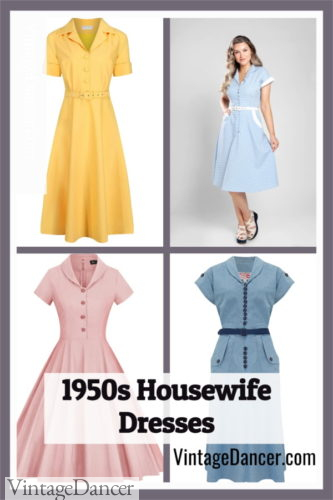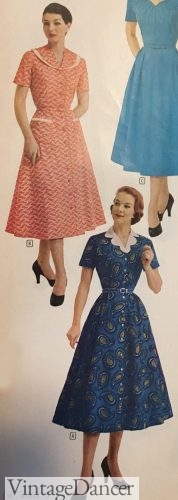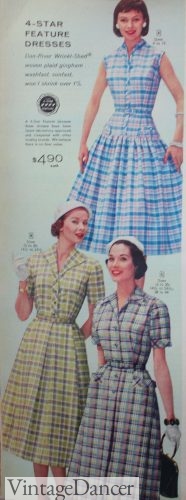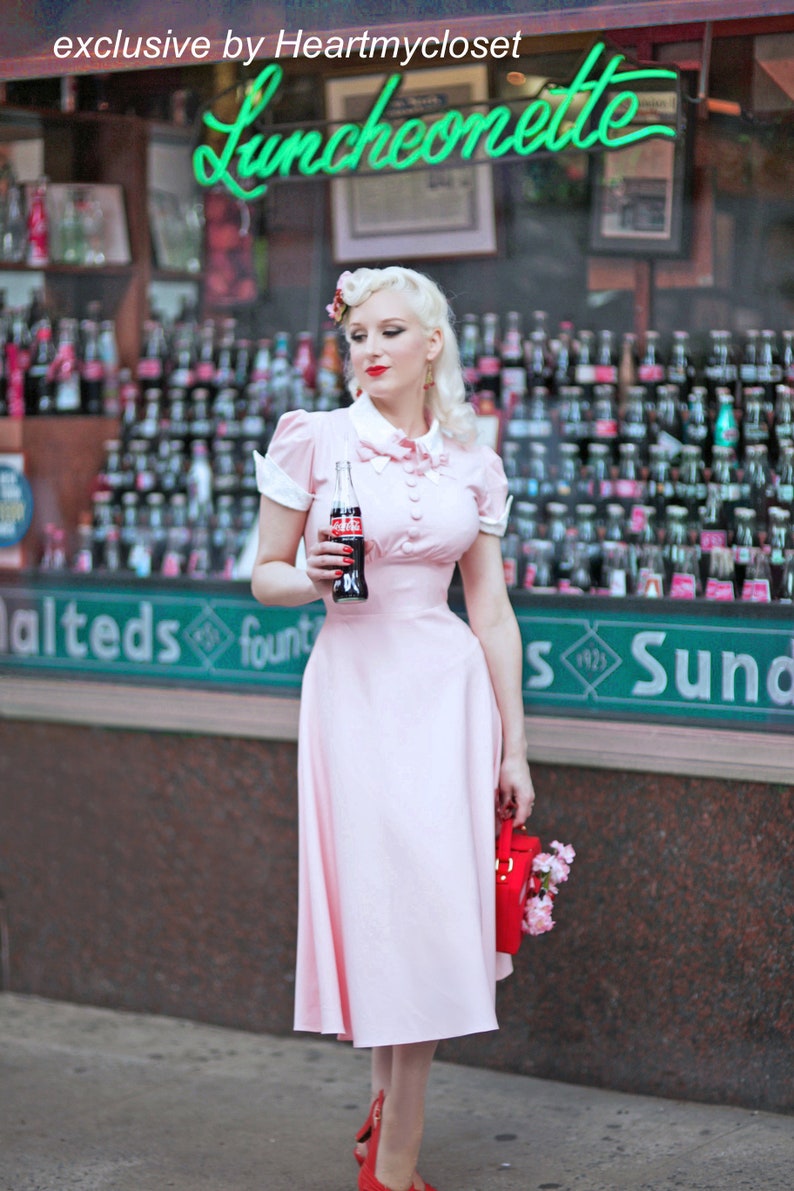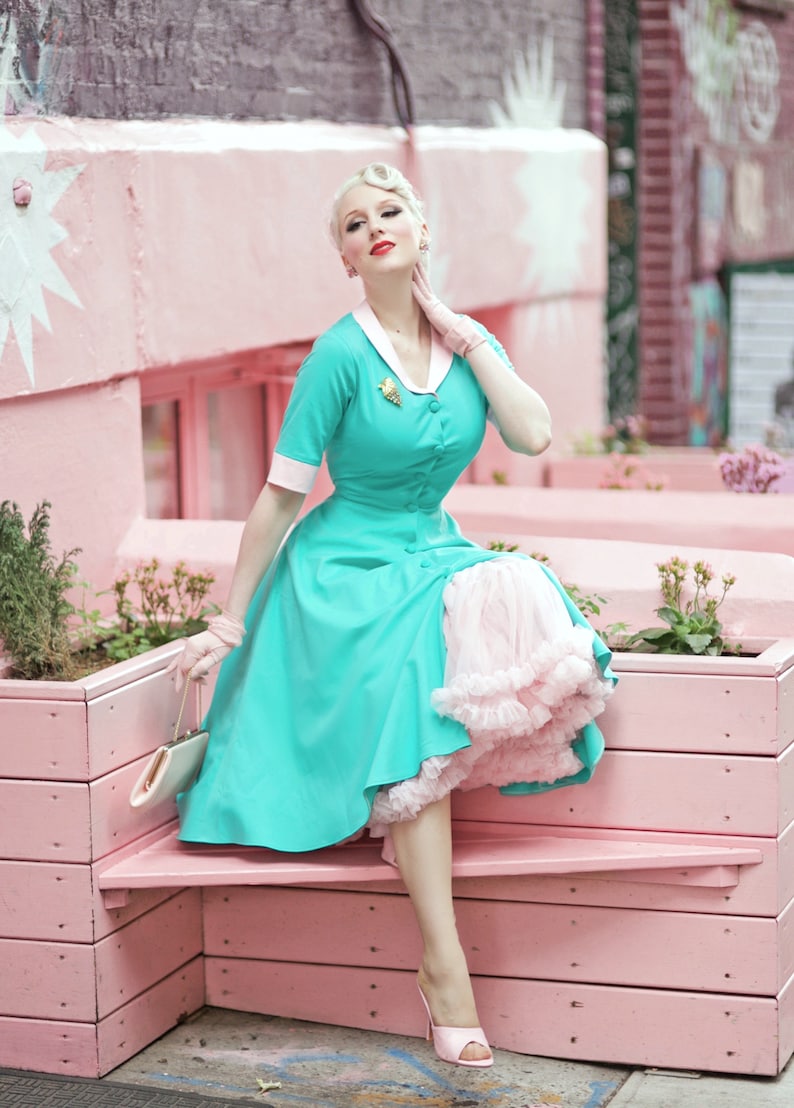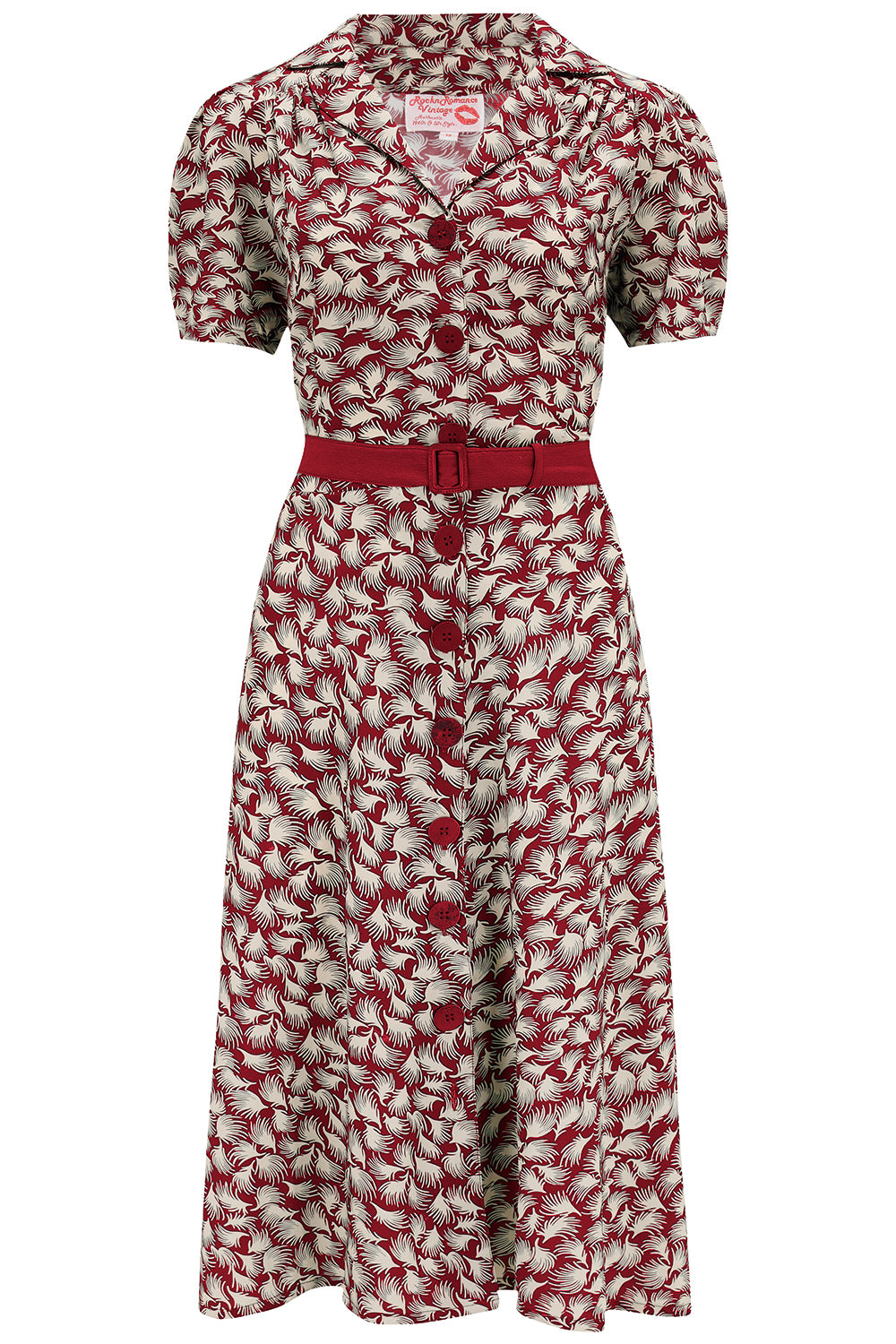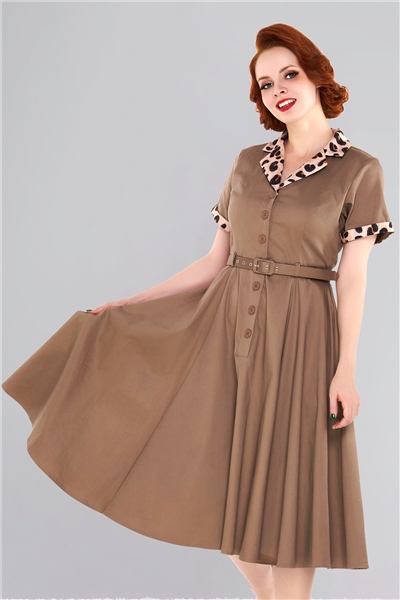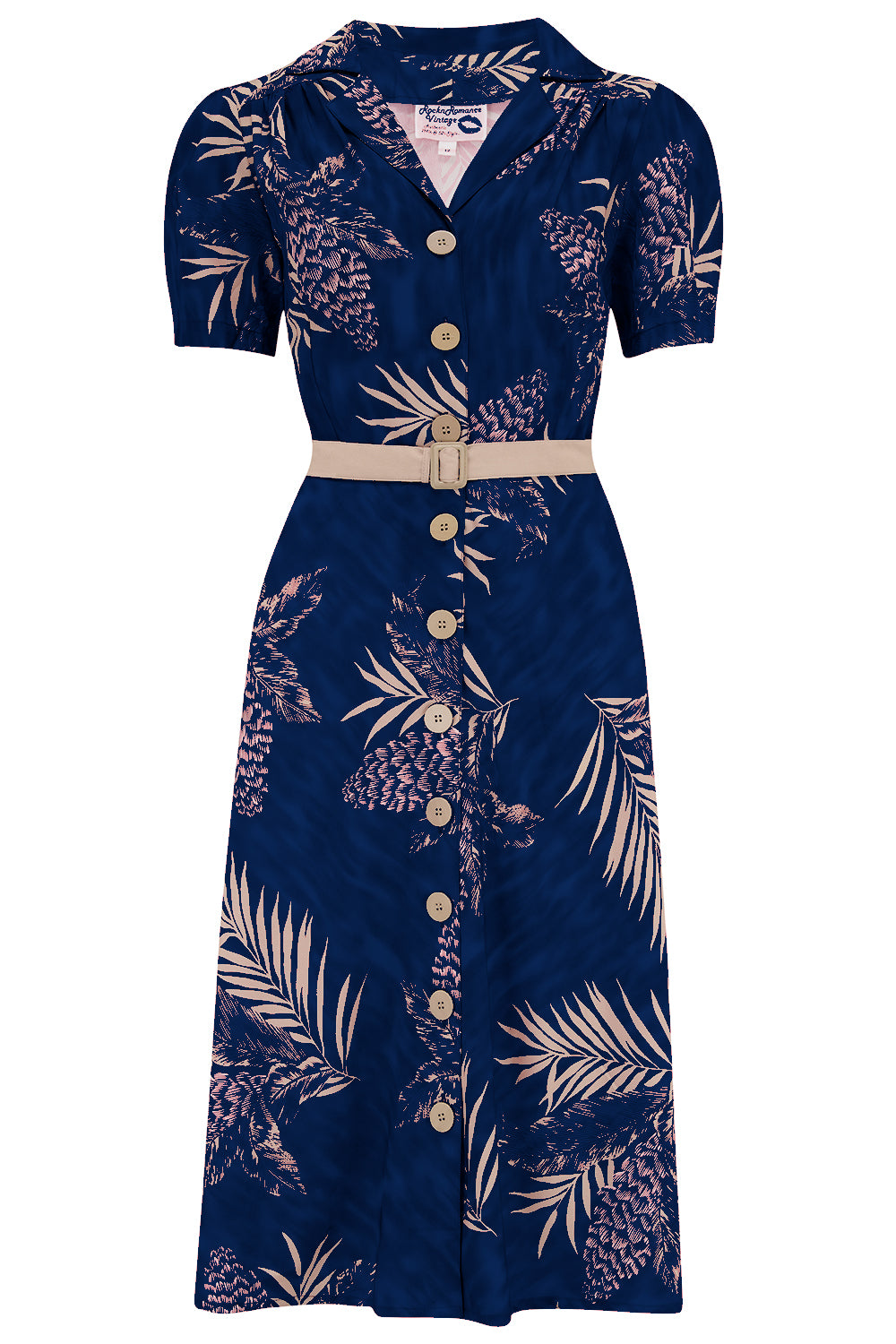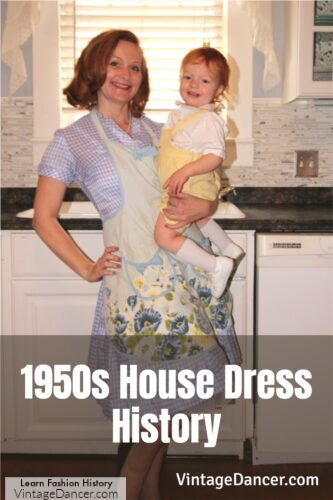 Simple 1950s house dresses were the daytime uniform of the dutiful housewife. Complete with a coordinated handmade apron, she set about her day running her home. There was no need to use fancy fabrics, big collars, or elaborate trim on a house dress that was covered up by an apron most of the day.
Simple 1950s house dresses were the daytime uniform of the dutiful housewife. Complete with a coordinated handmade apron, she set about her day running her home. There was no need to use fancy fabrics, big collars, or elaborate trim on a house dress that was covered up by an apron most of the day.
Instead, 1950s house dresses were simplified versions of “going out” dresses in easy to wash and wear cotton fabric.
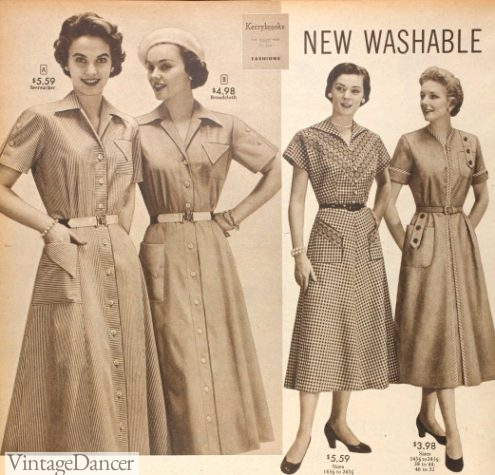
1952 simple house dresses
TV wives from Ozzie and Harriet, Leave it to Beaver, Father Knows Best, I Love Lucy and even The Dick Van Dyke Show all donned house dresses and aprons as part of their uniform.
Women wore house dresses from the time she started her day to just before dinner, when she would slip into something nicer, put on a fancy apron, and add a pair of heels and maybe a simple pearl necklace and earrings before greeting her husband at the door such as Lucy’s look here.
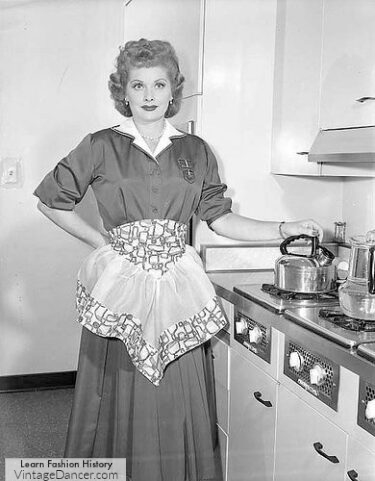
Lucy in her nice dress and fancy half apron
Ship the history and shop for 1950s housedresses/ shirtwaist dresses
1950s House Dress History
1950s house dresses were fancier than those of the previous decades that favored the plain wrap-around dress or A-line shirtdress. Beginning in 1947 with Dior’s New look, the shirtwaist dress was made into a 1950s classic.
Easy to put on with a row of buttons down the front, easy to wash when made of cotton or synthetics, and elegant with a nipped waist and full skirt. Unlike going out dresses a 50s house dress needed to be lose enough to provide maximum movement and durable for the daily rigors of cleaning and gardening.
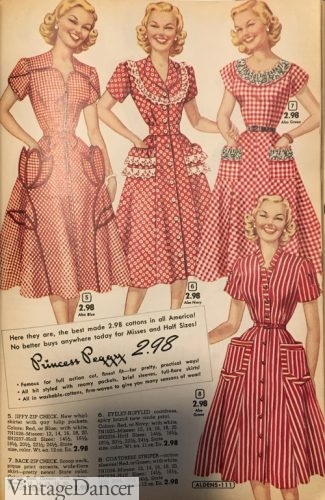
1953 red gingham checks and candy stripe dresses with large pockets
“The shopper should expect a well-designed house dress to provide for comfort and roominess when the wearer is reaching or stooping in the pursuit of her household duties. The dress should also be easy to put on and take off and to iron without too much demand on her time and effort.” Better Clothes for Your 1952
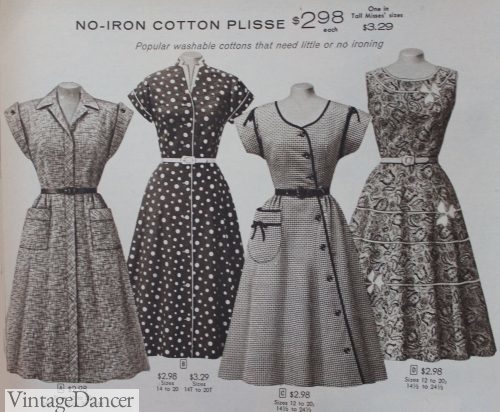
1956 Simple cotton house dresses
A 1950s woman had to look elegant and clean, not exhausted by endless labor. New inventions in house cleaning and cooking appliances made her day easier. Looking like a hot mess was not acceptable, or so she was told over and over again by TV, radio ads, and newspapers.
- 1955 chevron and paisly print dresses
- 1956, Plaid prints were in fashion
Comfort was key. The full skirt (5 yards at least) of gathered fabric with a thin petticoat underneath made it easy to move in, change bed sheets, make dinner, and tend to children.
The button down bodice, known as a shirtwaist, was the prime style of house dress but other styles could be worn. It was less important what style to wear as it was how practical it was for the day’s tasks.
Young and old women wore the shirtwaist dress. Learn more about Mrs or Mature women’s 1950s fashion.
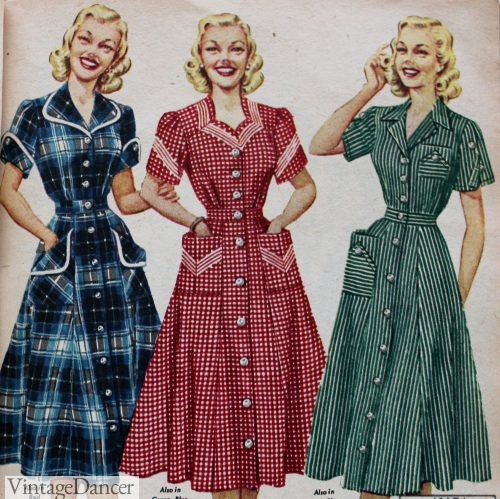
1952 Plaid, dots and stripes with contrast trim and buttons
1950s house dress colors and patterns followed the trends of the year. Gingham check prints were all the rage in 1950. Pastel stripes came next in the middle of the decade. Plaid was the most common throughout the decade. T
here were also small polka dots, big and small stripes, chevron, paisley, and floral of all sizes and colors. Solid colors too were acceptable. Pink, teal, blue and green were the best colors. See more fabric swatches.
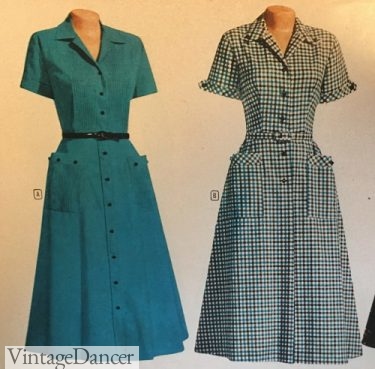
1955 teal blue plain dress or blue checks
Trim was minimal. Self fabric details such as small pleats were preferred over large add on trims. The exception to this was wide lace applique, small rickrack trim on collars and pockets, and big buttons in white or black. A coordinated thin belt was optional.
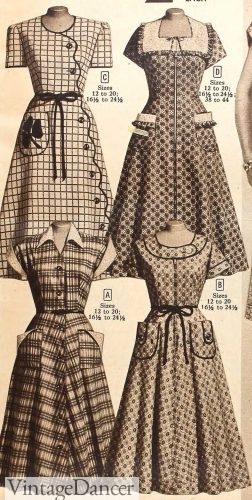
1955 simple trim jazz up she cotton house dresses
White collar dresses sometimes with matching white sleeve cuffs, were designed for service uniforms- maids, waitresses, shop girls, factory workers, laboratory assistants, hair stylists, and nurses. These white collars also made their way in women’s housewife dresses, but dressed up a bit to avoid the domestic servant look.
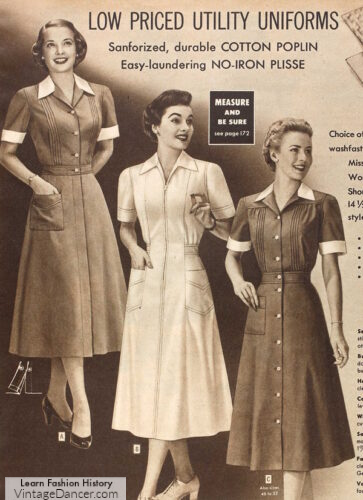
1953 uniform dresses for work or home
Common 1950s women’s uniform colors were light blue, medium blue, medium green, aqua blue, pink, all white, black with white trim, and light to medium grey.
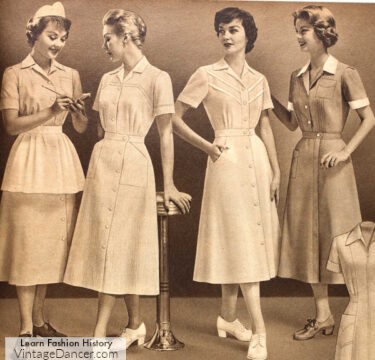
1957 uniform dresses
The famous scene form I Love Lucy when she and Ethel worked in the candy factory. Later colorized to show the ladies in pink uniform dresses while the manager wore grey with maroon trim.
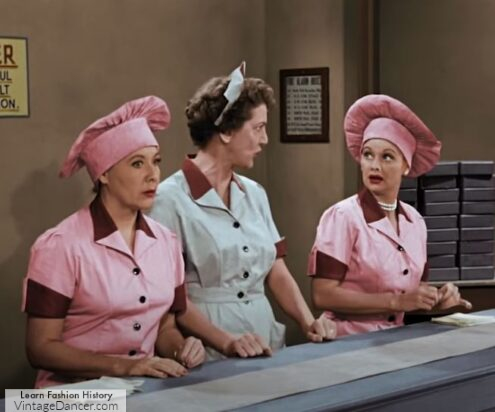
I Love Lucy, uniform dresses
1950s house dresses and uniforms usually had two patch pockets on the front of the dress or slit pockets built into the sides. These held all kinds of useful things such as clothes pins or a handkerchief.
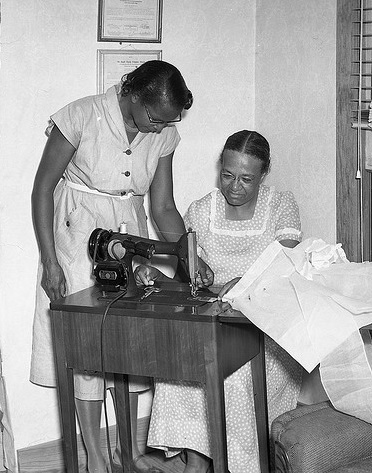
1950s sewing in house dresses with large patch pockets
The collar on the shirtwaist dress was usually pointed or a round peter pan collar. Some had no collars, just a round boat-neck or sweetheart opening. There are too many varieties to list them all.
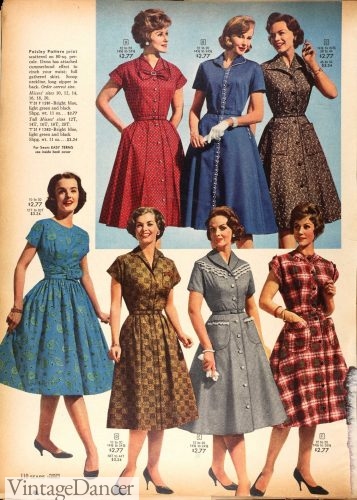
1959 daytime or house dresses
Sleeve types also came in all sorts of shapes. The short cap sleeve was common in summer, especially with a turned up cuff. Mid arm sleeves were nice year round, and 3/4 long sleeves kept warm in winter yet didn’t get wet while washing dishes.
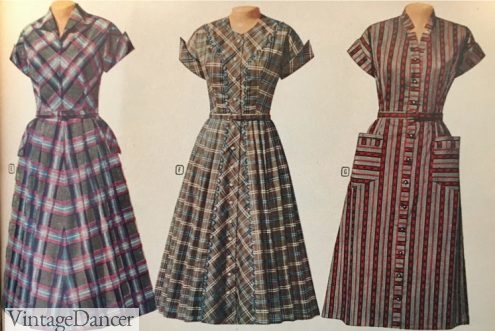
1955 plaid shirtwaist dresses with cuffed short sleeves
The house dress skirt was a full swing skirt. It was less full than party dresses and worn with multiple layers of petticoats. All that extra fluff would just be in the way. Instead, 1950s house dresses still created a wasp waist with full hip silhouette but on a more streamlined scale.
The straight skirt fitted sheath dress was not a common house dress. There were some, of course, but only women who embraced fashion over comfort chose to do chores in a fitted dress.
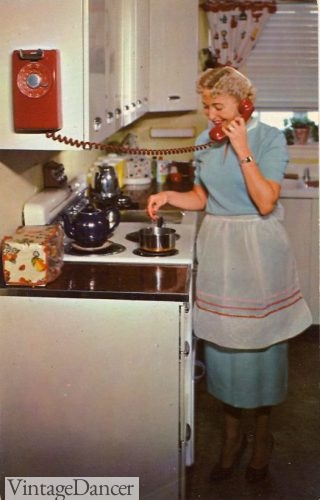
An ad with a sheath dress and half apron worn while cooking
Advertising featuring a housewife almost always had her dressed in a sheath dress or elegant daytime or party dress with heels and jewelry to coordinate. This was far from reality.
Many women broke social rules by wearing pants to do housework! While this wouldn’t be advertised until the late 1950s, women had been wearing long pants, capris, jeans and even shorts at home for many years.
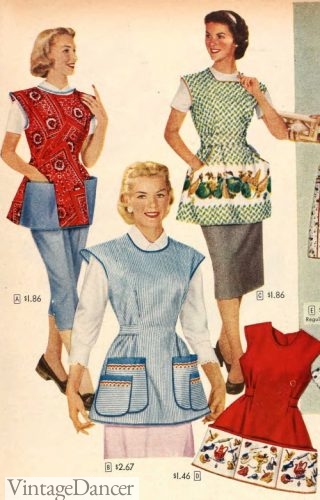
1957 capri pants made housework much easier
For running errands or visiting friends outside the home, a woman did not need to change dresses, although she usually did. The house dress was nice enough. Simply adding jewelry, gloves, a belt, and a cardigan sweater or bolero jacket was enough to transition her dress out of the house.
The 1950s were not a time to look like a domestic servant, even if she acted like one. Fashion was fashionable even when no one would see her in it.
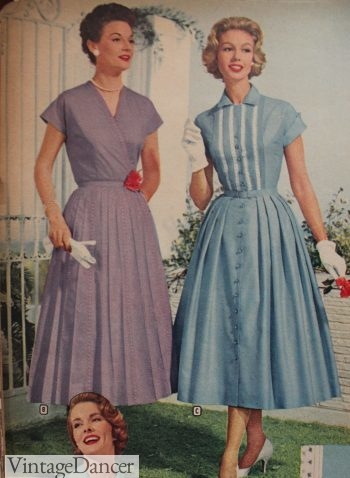
1958 House dress or afternoon dress? Simple dresses blurred the lines between house work and going out. A few accessories made the transition from home to outside.
Read on for history of the 1950s apron.
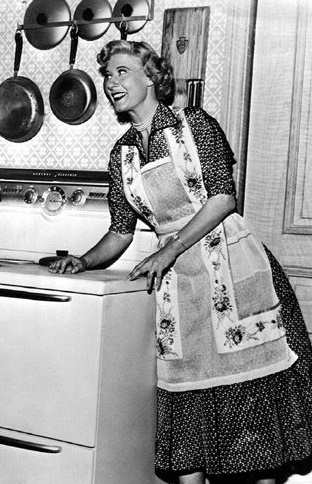
1953, Joan Davis, I Married Joan, wears an apron with pearls and a polka dot house dress
Buy or Sew 1950s House Dresses
Vintage 1950s house dresses are still easy to buy today but not always in a size or condition you need. Most reproduction 1950s dresses are sleeveless summer dresses or nicer afternoon styles. The house dress style is less common. These are some options I have found online:
Shop for new 1950s style house dress and day dresses here.
Sew your own house dress with a 1950s pattern here.
Debbie Sessions has been teaching fashion history and helping people dress for vintage themed events since 2009. She has turned a hobby into VintageDancer.com with hundreds of well researched articles and hand picked links to vintage inspired clothing online. She aims to make dressing accurately (or not) an affordable option for all. Oh, and she dances too.
